In my closed-loop pump system, the OpenAPS rig (a tiny Linux computer) communicates with the Medtronic Veo 554 pump every few minutes via radio. This works great, but it does put extra load on the pump’s AAA battery. So the batteries don’t last as long as in a non-looping pump.
These AAA batteries are smaller than the AA batteries used in the Animas Vibe or the Medtronic 640G pumps, and where an Energizer Ultimate Lithium AA would last for 2 months in my Vibe pump, that sort of life would be amazing in my looping Veo. Sometimes batteries last only 3 days, but some batteries can get a bit longer.
Luckily with these pumps changing the battery is a quick and easy affair. Remove the old battery, insert the new one, the pump does a quick self-test, and life continues. This is a huge change from the Animas Vibe, where after a battery change the pump needs to be rewound and re-primed. That often meant I’d try to put off a battery change to coincide with my next cannula change, but with the Medtronic pumps it’s easier to just replace the battery when needed.
However if your pump is old and the internal backup capacitor doesn’t keep its charge very long you may need to insert the new battery very quickly to avoid having to do a full reset/rewind.
For looping, when the voltage drops low enough to trigger the pump’s LOW BATTERY warning the pump shuts down radio communications, at which point the rig loses contact and lets the pump go back to its regular programmed basal rates. You’ll want to replace the battery ASAP to keep the loop running, although the pump itself should keep operating for a while.
An obvious question is: which batteries should I be using? The cheapest alkalines I could find, or the Energizer Ultimate Lithium? Or something in between?
Instrumenting the pump/rig
Through the radio interface OpenAPS is able to monitor the pump’s voltage level (not just the LCD battery indicator) so I wrote some scripts to log the battery voltage over time. This has gone on in the background for months as I ran each battery down to its LOW BATTERY state before replacing it. So I have measurements of real-world batteries used in real-world conditions. Rather than trying to guess what power consumption was typical for one of these pumps and then trying to extrapolate from the datasheets provided by battery manufacturers, we can just measure it.
The behaviour of a battery very much depends on issues like the current draw, so the way each different battery performs in an insulin pump does not indicate that they will all behave in the same way in a torch or in a digital camera. So the comparisons here are explicitly in the context of an insulin pump!
In this case an Medtronic Paradigm Veo 554 insulin pump, talking to an Edison/Explorer OpenAPS rig that was sometimes next to it, sometimes on the opposite side of my body. That rig was using an external 82mm 916 MHz antenna (inside the rig case) for optimal radio performance.
Alkaline vs Lithium
The battery-level indicator on the pump’s LCD is designed around the voltages produced by alkaline batteries. Lithium batteries don’t behave the same way: for a start they stay at a much higher voltage for a long time, but then they drop rapidly. That means that the LCD indicator shows full for a very long time, but then gives you almost no warning when it dies.
This may be some of the background to Medtronic historically advising users to NOT use Lithium batteries in these pumps (they say it’s OK in the 6xx series of pumps though). Hundreds of people around the world report they’ve had no issues with using Lithium batteries in their Medtronic 5xx/7xx pumps.
There’s also the possibility that some lithium batteries can run hot, causing issues for the pump and the insulin. Years ago I used a supermarket-brand lithium AA in my Animas pump, and for some reason it decided to cook the pump in the middle of the night. Ever after I stuck to the recommended Energizer Ultimate Lithium brand, and I went into this with some trepidation about off-brand lithiums.
The candidate batteries
All of these batteries were sourced at mainstream retail locations in Australia.
| Energizer Ultimate Lithium | This is Energizer’s premium model, with a price to match. |
| Varta Professional Lithium | The only other lithium AA I could find here in Australia. Energizer rules this market segment! |
| Energizer MAX | Energizer’s base model alkaline battery. Advertised as “up to 3x longer lasting” with no real clarification. |
| Energizer Advanced | Advertised as “up to 60% longer lasting” and sold at a premium. If you read the fine print it does say the 60% comparison is in digital cameras, and against non-alkaline Eveready GOLD batteries (not against the MAX). |
| Energizer Eco Advanced | Another premium model, partly made from recycled batteries and thus giving people the environmental “warm and fuzzies”. Advertised as being “long lasting”, but that could just mean while it’s in storage on a shelf. |
| Duracell Coppertop | Duracell’s base model. |
| Duracell Ultra | Again this is marketed with a vague “higher performance + longer lasting”. |
| IKEA Alkalisk | This was a late addition to the list: an impulse purchase at a bargain price. |
There are many other cheap alkaline batteries around, but this testing takes time, and at this point I couldn’t be bothered looking further. Data will continue to be gathered in the background during my normal use of the pump as I cycle through these models over the coming months of course.
Initial results
You can click on any of these graphs to see a larger version.
The two lithiums really stand out from the rest, don’t they? There is a lot of information in this graph, so I’ll break down and summarise it as we go.
The voltage reported to the rig has a precision of 0.01 V, so the graphs are stepped even though the actual voltage will have varied at a finer scale. When the pump reported LOW BATTERY and stopped communicating, I have artificially dropped the graph lines to zero. Thus we can clearly see the drop-dead times on the X axis of the graph. Where a test has not been completed and run down to that level, the graph does not hit the X axis.
Caveat!
First of all I need to point out that these are preliminary results from ongoing testing. With only a single battery tested of most models, we might be looking at batteries representative of their brethren, or we might just be looking at unusual outside cases. There’s usually an expectation that the variation will be greater in the cheaper brands, but we’ll see how that pans out.
The ongoing testing takes time so these preliminary conclusions may have to be revised as the data from multiple batteries is assembled.
Secondly, this testing has been done using OpenAPS. It should be indicative for other Medtronic 5xx/7xx pumps used with OpenAPS, although you may get more or less time out of batteries in general than I do. Loop seems to be more battery-efficient, even with the older pumps. With x23/x54 pumps Loop can take advantage of the MySentry radio protocol which uses a little less power and gives more days per battery. Hopefully the results would just be scaled out, but possibly not.
Observations
Let’s start with a more useful scale on the Y axis of the graph:
There’s still a lot of data there, but I’ll keep breaking it down.
Overall performance
I knew the lithium batteries would start at a slightly higher voltage than the alkalines, but the initial 1.7V of the Varta lithium was a surprise. It shouldn’t be a problem though. We think that the pump probably uses a voltage boost regulator to a 3.3V supply rail, and it should be able to cope with 1.7V without hassle. But first we’ll look at the akalines.
All the alkaline batteries have similar behaviour. Within the Energizer brand, as I expected the cheaper batteries didn’t last as long in general. But the difference was smaller than I had been prepared for. Similarly, the gap between Duracell’s Coppertop and Ultra batteries is apparent. A follow-on question is whether the price difference is worth it, which I’ll get to further below.
Voltage and radio performance
Generally once the battery voltage dropped to around the 1.2V level, the radio connection to the rig seemed to become a little unreliable, but would generally keep going. On several occasions the loop would report it had lost contact with the pump and I’d assume there was a LOW BATTERY battery warning waiting for me on the pump. I would get the pump out of my pocket but there’d be no error on the screen. In fact the pump would start talking to the rig again.
For the alkaline batteries I generally didn’t observe any working voltages lower than 1.17V. Sometimes a little higher, but the pump had stopped responding by the time the next sample was taken. I did briefly observe 1.16V a couple of times, just as the pump alarm condition was triggered and communication ceased. The Energizer lithium stopped at a higher voltage, but I’m expecting that was because at that state of discharge, the lithium voltage when under load quickly dropped to below the cut-off level.
Spikes
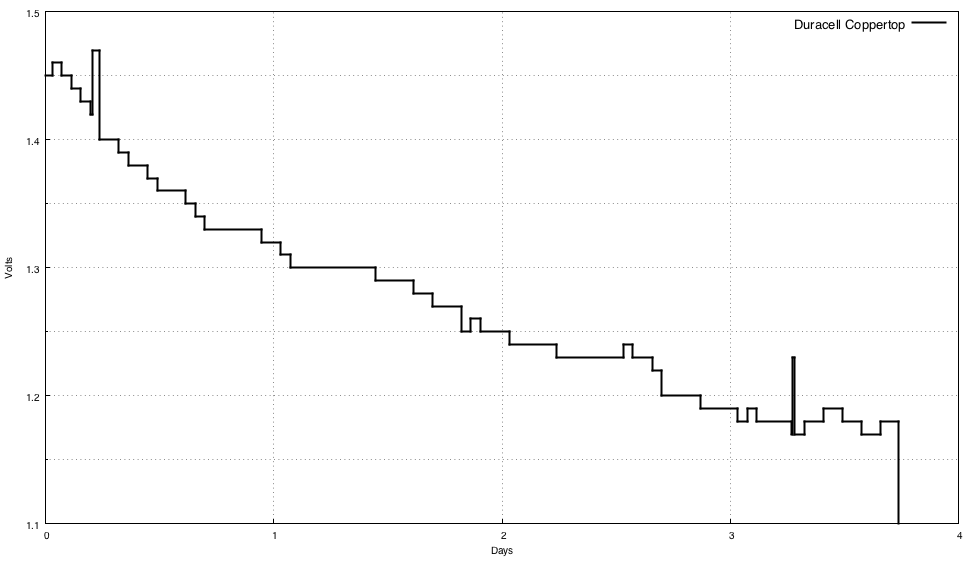 We can see that every now and then there’s a sharp spike on the graphs. A short-term rise of around 0.05V. These coincided with times the pump was rewound and the reservoir was being replaced. So the motor then spent a short time idle before the replacement and priming was finished. Oddly these spikes never seem to appear when the pump has merely been suspended for a while (e.g. while I’ve been having a shower, which usually takes longer than a pump rewind).
We can see that every now and then there’s a sharp spike on the graphs. A short-term rise of around 0.05V. These coincided with times the pump was rewound and the reservoir was being replaced. So the motor then spent a short time idle before the replacement and priming was finished. Oddly these spikes never seem to appear when the pump has merely been suspended for a while (e.g. while I’ve been having a shower, which usually takes longer than a pump rewind).
Lithium batteries
I only have access to two types of Lithium AAAs: Energizer Ultimate Lithium, and Varta Lithium (which is sold through the Bunnings hardware chain). These batteries behave quite differently to the alkalines. As you can see from the graphs the voltage remains high for longer, but then drops very quickly. This means that the Medtronic pump’s LCD battery indicator shows “full” for a long time, but then quickly shows up as empty. So knowing how long these batteries are likely to last is very important.
Unlike the alkalines, the lithium voltage goes up and down. The Varta behaviour was a little confusing. At almost 3 days the voltage dropped a significant step, which makes me think that the battery’s internal chemistry is doing something fundamentally different to the Energizer lithium.
At just under 5 days, the Varta battery failed. From a voltage of 1.44V it suddenly died. The pump did not record a LOW BATTERY status and continue with its preprogrammed basal delivery: it stopped. Presumably the battery dropped quickly to a level below something the pump can handle. This was at some point after 3 AM, so without any basal insulin for several hours by the time I woke up, I wasn’t happy.
Because this failure seems unpredictable (the voltage pattern doesn’t seem to show any warning) and because 5 days is similar to what we get from some alkaline batteries, I cannot recommend using the Varta Lithium battery in an insulin pump.
Lithium “lumps”
As well as the short spikes from reservoir rewinds, you’ll notice that the graph for the lithium batteries goes up and down over the days. This was an initial surprise, but there seems to be a simple explanation. The lithium batteries seem to be affected by the ambient temperature. This was observed on both models of lithium battery.
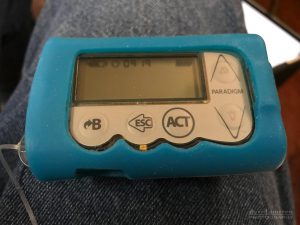
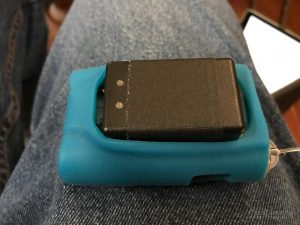
This is a Minnow temperature datalogger, which usually lives in my fridge helping monitor my insulin. But I taped it in place on the back of the pump and have been carrying it around for a month. Every now and then I would connect to the logger and download the data. When comparing the voltage and the temperature across the day, a general pattern emerges.
Unfortunately this temperature logging was introduced after I’d run through the first Energizer Ultimate Lithium battery. But for clarity here’s the voltage trace of just that battery:
This voltage is quite “lumpy”. Note that if I had a voltage alarm set in Nightscout at 1.3 and decided to replace the battery when it first hit 1.3V, I would have wasted over 4 days of useful battery life!
Now here’s the temperature graphed in red, with the matching voltage of one of the alkaline batteries in blue:
There doesn’t seem to be a clear correlation here, and all the alkaline batteries were the same.
As you can see, the temperature varied through the day. Note that this is the temperature of the logger, not the pump. When the logger was towards my skin it showed a temperature about 5˚C warmer than when the pump was against my skin and the logger was against the outside of my pocket. The orientation of the pump through the day was fairly random. This does mean that the indicated temperature is an approximation of the pump battery’s temperature. Note that when I went to bed under a warm doona it remained warm all night.
Insulin above 30˚C?
It’s interesting to see that 30˚C line, which the logger regularly exceeded. Insulin is normally kept at between 2-8˚C for long-term storage, but most are rated for being kept at up to 30˚C for up to 28 days.
It’s safe to assume that the insulin in my pump is regularly warmed to above that point, but it doesn’t have to last 28 days in the pump. When working in 40+˚C (ambient) conditions I have occasionally found that the insulin doesn’t last a whole 3 days, but in my normal conditions I haven’t had a problem in almost eight years of pumping.
Here’s the temperature and voltage graphed for the Varta lithium:
We can see a bit of correlation here: increased temperatures were soon followed by increases in the voltage. There may be other factors also at play, but the temperature correlation seems fairly obvious.
I currently have another Energizer Ultimate Lithium being run through the system, so this graph is not yet complete. But the temperature correlation introduced another surprise:
For the first few days the temperature correlation is not that obvious, but then at around Day 3 the temperature swings became larger and the correlation reappeared, with the voltage becoming lumpy again. I started using this battery while I was travelling for a conference, and it seems as though the motel bed wasn’t as warm as my doona at home when I returned!
What does this temperature/voltage correlation mean for users of lithium batteries? Probably not much, other than to recognise that the voltage may go up again after hitting an alarm point, so be cautious about changing too early.
Days per battery
What I wanted to know at the beginning of all this was approximately how many days each battery would provide. But rather than saying a particular battery can get “4.26 days” I’ve looked at the graph and rounded the lifetimes down to the nearest half day (as long as that wasn’t skating along at a particularly low voltage).
This gives me a safety buffer in my estimates. You might not want to run all your batteries down until empty, and in fact you might decide to change them early to avoid inconvenience. This buffer may also insulate us slightly from the n=1 sample size of the current data set: I will re-visit these estimates as the data set grows.
| Battery | Estimated days |
| Energizer Ultimate Lithium | 10 |
| Energizer Advanced | 4.5 |
| Duracell Ultra | 4.5 |
| IKEA Alkalisk | 4.5 |
| Energizer Eco Advanced | 4.5 |
| Energizer MAX | 3.5 |
| Duracell Coppertop | 3 |
| Varta Lithium | n/a |
These figures should let me estimate how many batteries I need to take with me on a trip, and calculate ongoing costs.
Nightscout battery warnings
In your Nightscout configuration you can set warning and alarm voltage levels for the website to warn you that your battery is getting low. Keep in mind that especially with lithium batteries the voltage can go up as well as down, so if you switch the battery the first time it dips you might be wasting days’ worth of battery. Have another look at the graphs to see what I mean.
As long as I keep a spare battery nearby, I’m comfortable with the following settings:
| Alkaline | PUMP_URGENT_BATT_V | 1.19 |
| PUMP_WARN_BATT_V | 1.22 | |
| Lithium | PUMP_URGENT_BATT_V | 1.3 |
| PUMP_WARN_BATT_V | 1.35 |
This does mean that if you change battery type you should log in to the admin page of your Azure/Heroku site (the common hosting platforms for Nightscout) and update the above config variables. It’s not something you can set on your pump or in your Nightscout site itself.
Pricing
I looked at a range of battery sources (all were brick-and-mortar stores) in October 2017 and identified the most cost-efffective choice for each model. These prices are in Australian dollars. The stores I surveyed were Woolworths, Coles, Officeworks, Bunnings, and IKEA.
The unit cost varies across the pack size, and occasionally there are special discounts. But these figures provide a starting point for comparisons. Here are the packages that had the best unit cost per battery model:
| Battery | Source | Units/pack | Unit cost |
| Energizer Ultimate Lithium | Bunnings | 4 | $4.23 |
| Varta Lithium | Bunnings | 4 | $3.75 |
| Energizer Eco Advanced | Woolworths | 10 | $1.68 |
| Duracell Ultra | Bunnings | 10 | $1.50 |
| Energizer Advanced | Bunnings | 24 | $1.04 |
| Duracell Coppertop | Bunnings | 24 | $0.83 |
| Energizer MAX | Woolworths | 14 | $0.70 |
| IKEA Alkalisk | Ikea | 10 | $0.40 |
The price per battery can be significantly higher if you buy smaller packages of course.
The premium price charged for Energizer’s “Eco Advanced” battery really stands out in comparison to the other alkalines.
But when we factor in the lifespan of each battery we see a more useful story:
| Battery | Days | Daily cost |
| Energizer Ultimate Lithium | 10 | $0.42 |
| Energizer Eco Advanced | 4.5 | $0.37 |
| Duracell Ultra | 4.5 | $0.33 |
| Duracell Coppertop | 3 | $0.28 |
| Energizer Advanced | 4.5 | $0.23 |
| Energizer MAX | 3.5 | $0.20 |
| IKEA Alkalisk | 4 | $0.09 |
Caveats
Remember, there are lots of caveats here:
- This a small number of batteries (mostly n=1 so far).
- The results may vary with batteries sourced from a variety of different stores/warehouses.
- The results are only from my pump, used in my conditions.
- Pumps used with OpenAPS can vary in battery consumption compared to pumps used with Loop, which can vary again depending on the pump model.
So this is just a line in the sand to provide some comparison between batteries. But hopefully it’s useful!
Conclusions
If you want the convenience of only changing the pump battery every 10 days or so, the Energizer Ultimate Lithium is the obvious choice. It does cost AU$0.42 per day, but on a long trip you will have to carry fewer batteries. Also one lithium is about half the weight of an alkaline: when backpacking or flying this might make a difference to you (only 100 g of savings for a month of batteries, but sometimes every 0.1 kg of luggage counts!).
If you want the most cost-effective version, that really depends on where you can buy your batteries from. But at only AU$0.09 per day, a block of generic-looking batteries from your local IKEA store might be useful. If you decided to replace the IKEA battery every 3 days (e.g. at the same time as your cannula) you’d still be paying only $0.13/day. Of course you would be sending 50% more batteries to recycling every month. Incidentally, I gave some friends an early heads-up about the IKEA batteries performing well, and they seem to now be having similar success with them.
These preliminary conclusions will be reviewed and updated over time as the data set is fleshed out.
Update, December 2017: an updated post has been published. It tweaks a few of the conclusions from this article.

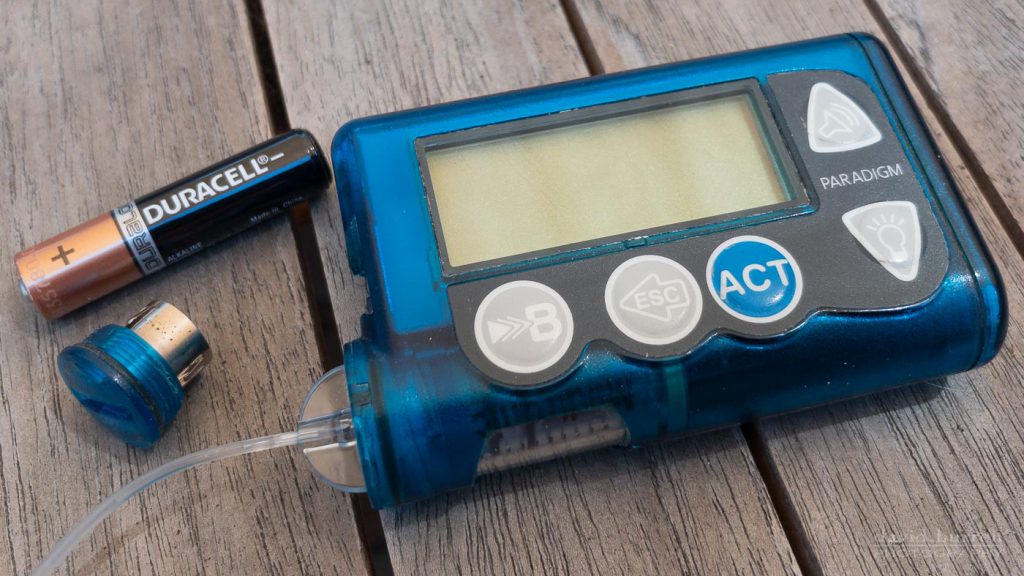
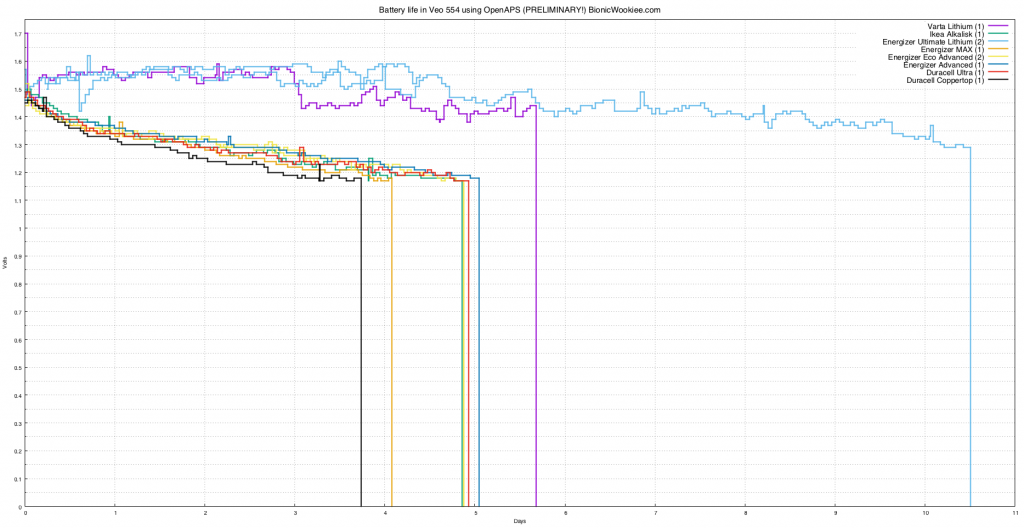
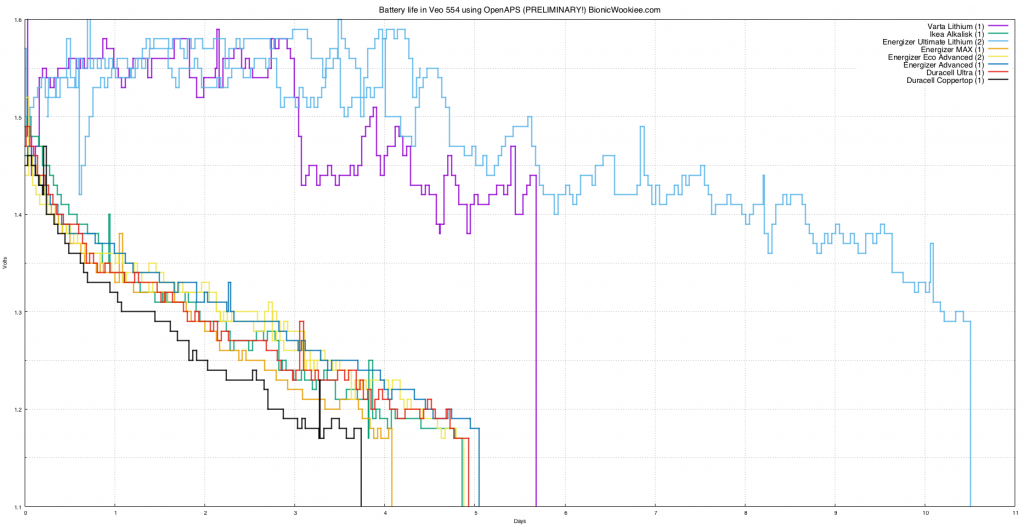
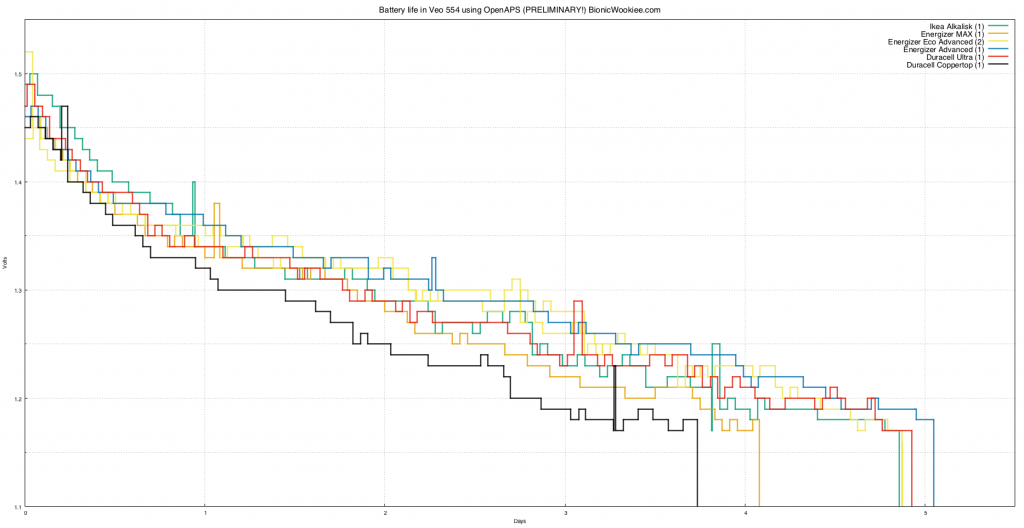
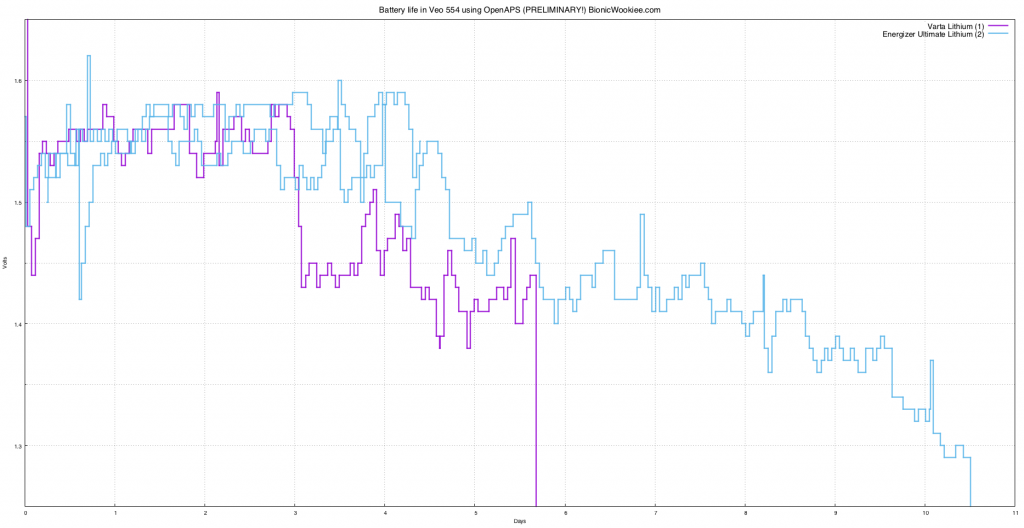
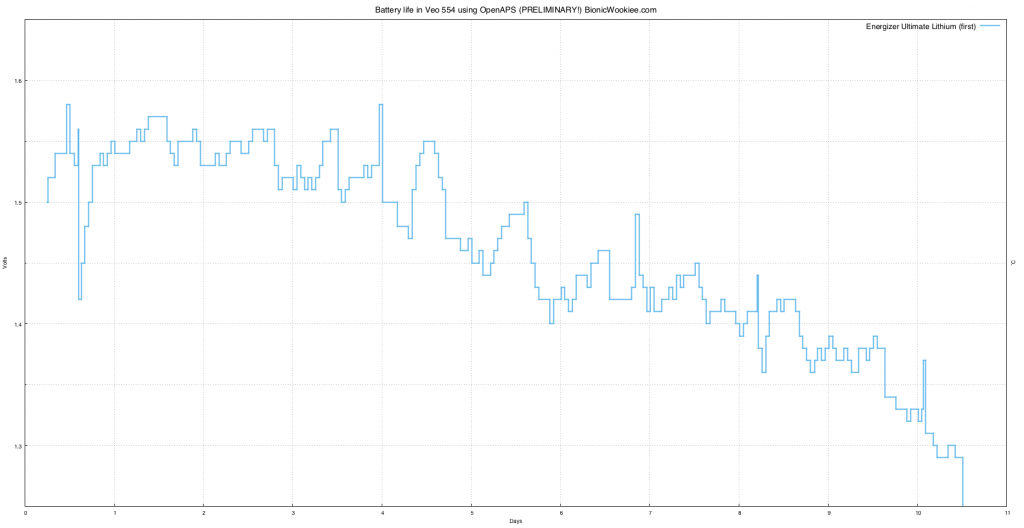
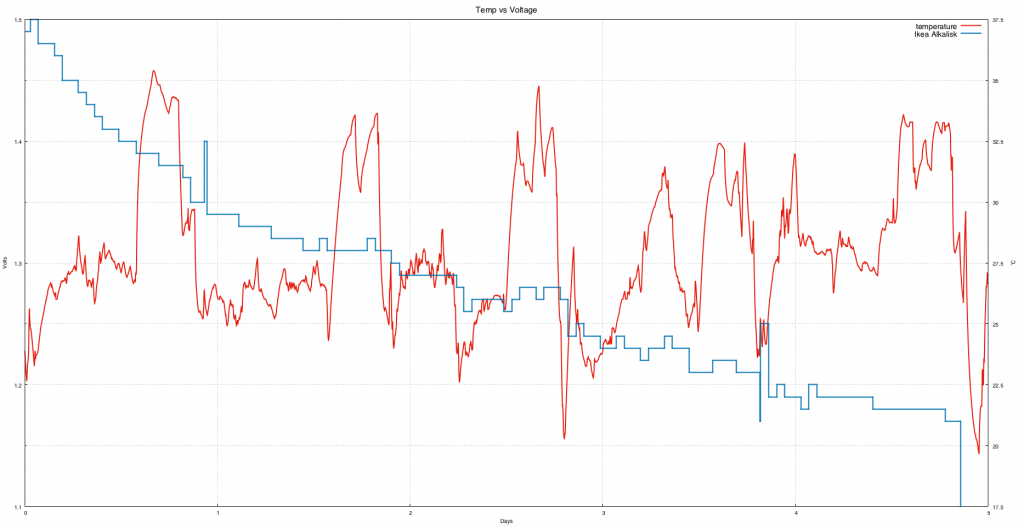
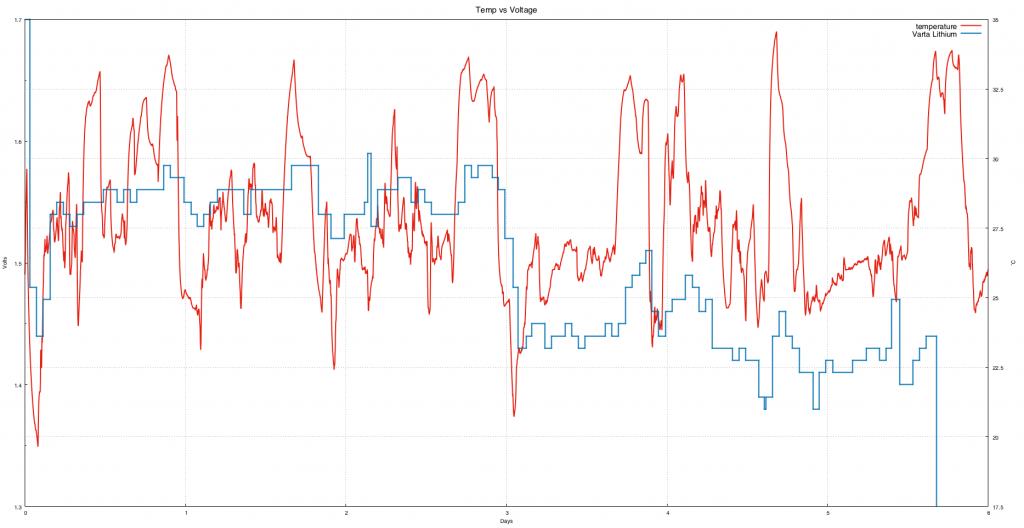
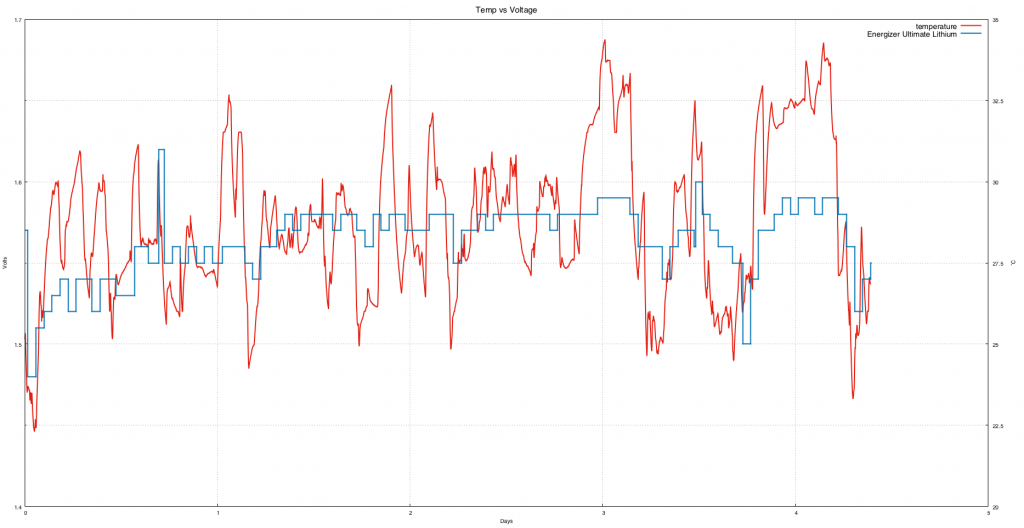
This is an incredible review. Thank you so much!
– a fellow OpenAPS user
I’m glad it’s useful!
Thanks for posting, very good job and extremely helpful for future battery purchases.
David, thanks for sharing this. It’s very helpfull.
Have just switched to lithium batteries for the paradigm so this has been a very useful read – thank you David!